Corsair Obsidian 900D Case Review: Think Big, That's Only HALF as Large
by Dustin Sklavos on April 16, 2013 11:00 AM EST- Posted in
- Cases/Cooling/PSUs
- Corsair
- Water Cooling
- ATX
- XL-ATX
Noise and Thermal Testing
As I mentioned in the introduction, doing our standard noise and thermal testing on the Corsair Obsidian 900D is primarily an academic affair. When you're dealing with a liquid cooling system, optimal airflow design becomes slightly less important. This isn't an air cooling case the way, say, a SilverStone FT02 might be.
Ambient temperature was 21C during testing.


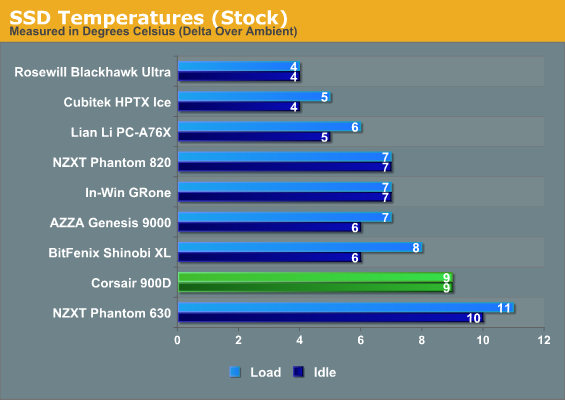
In its stock configuration, the 900D is closer to the middle of the road. This isn't a tremendous surprise; the stock fans are about as basic as a $349 case is going to get.
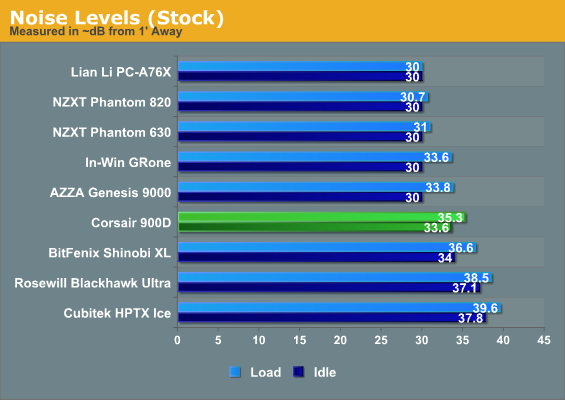
Because the 900D doesn't include a fan controller, the fans included push the case's bare minimum noise level to 33.6dB.
Overclocking the system should produce fairly similar results.
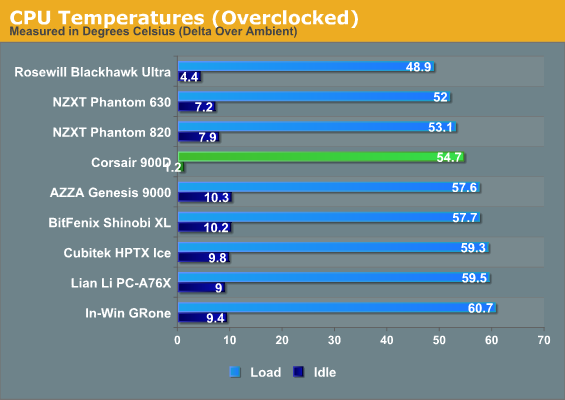
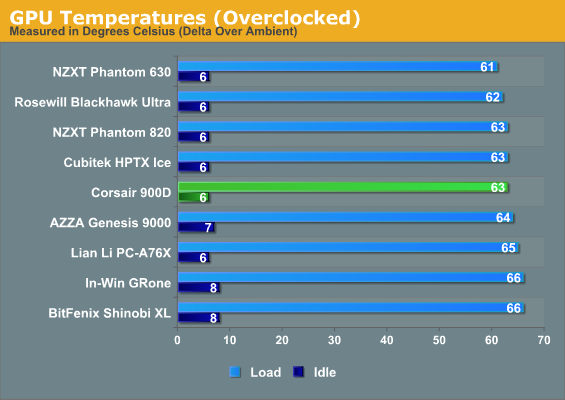
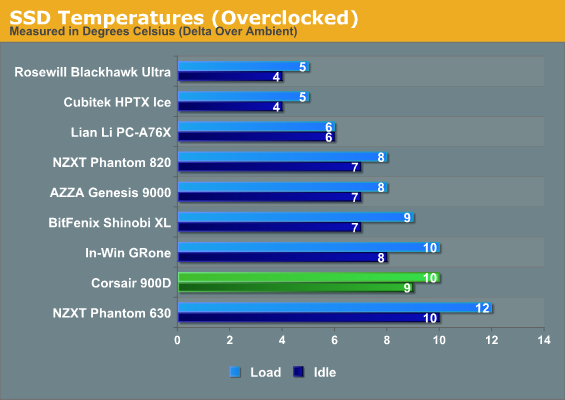
Again, the 900D produces...acceptable results as an air cooling case.
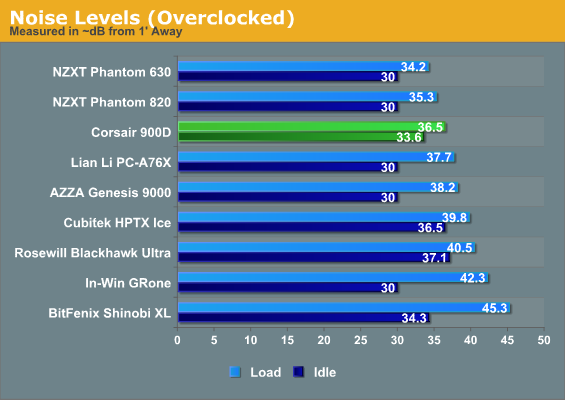
Noise continues to be an issue due both to the lack of a fan controller and the lack of any acoustic padding in the enclosure itself. While we're not judging the 900D on the terms it's meant to be judged by here, I do think omitting noise dampening material may have been a poor decision on Corsair's part.
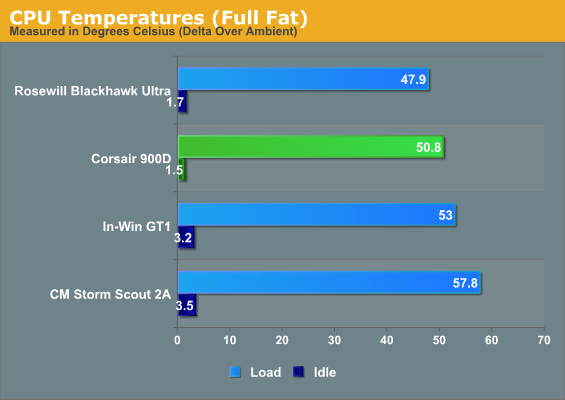
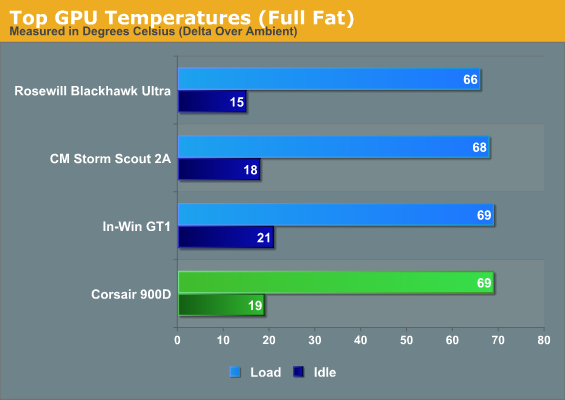

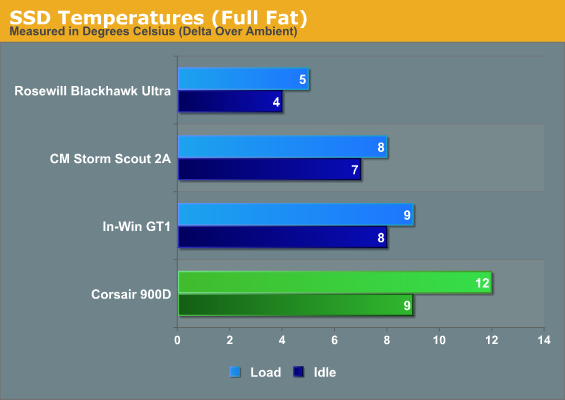
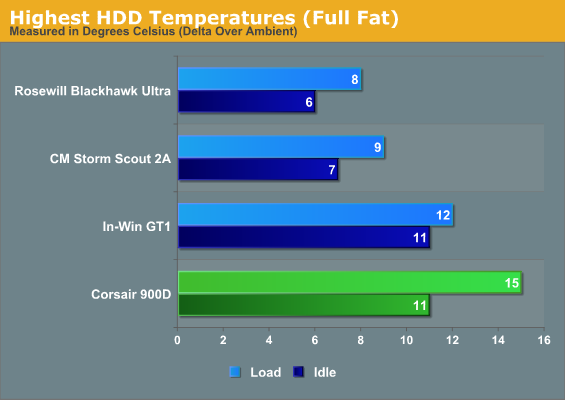
Up until this point drive thermals have been fairly poor, but please note that even under the worst circumstances we're still talking about being 10-15C below spec for these drives at least. They're still running cool, it's just not the aggressive over-cooling a lot of enthusiast cases do.
That said, stock air cooling continues to be fairly underwhelming. This is one place where the competing Rosewill Blackhawk Ultra does have an edge: it includes a stock air cooling design that's pretty aggressive and effective.
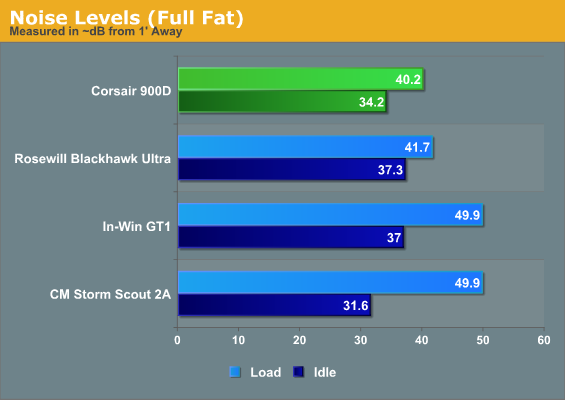
Despite the lack of a fan controller, under our most stressful test the 900D is able to run quieter than any of the other cases we've reviewed since adding the "full fat" testbed.










65 Comments
View All Comments
pensive69 - Wednesday, May 15, 2013 - link
i guess our slow migration BACK to Big Iron has begun.thinking i got rid of these too big to carry systems in
the mid 1980's... crap this is one huge monster.
if it's 40lbs now, think about when you load it up.
....herniaville... i hope i find and install the dolly wheel kit
before that happens.
fyi Dustin; i may have a powered driver bit with an extension i can lend you.
that will lower the skin lost murking back along the rear I/O panel.
this was one most unusual case review.
enjoyed highly!
PSYTRONIX85 - Friday, June 14, 2013 - link
Hi,I was wondering if you can install 2 PSU's and a 480 rad in the bottom at the same time or is there only room for the 480 rad and one PSU
PSYTRONIX85 - Friday, June 14, 2013 - link
Thats wilth the rad in push pull config toodezurtblue - Friday, December 27, 2013 - link
So xl-atx will fit? Alot of forums says it is not compatible with xl-atx ( http://www.komplett.no/corsair-obsidian-900d-big-t... ) also corsairs website dont mention any xl-atx motherboard when you see the spesifications.duervo - Tuesday, June 28, 2016 - link
This is one of the very, very few cases that can fit an HTPX motherboard inside. I got one to put my EVGA Classified SR-2 motherboard in, because I wanted something with smaller floor footprint than the MountainMods case that I was using. Yeah, it's a 5 year old motherboard at this point, which is old (much like this review to which I'm responding,) but it still runs over 20 VMs on it, with 48GB RAM, dual Westmere Xeons, LSI 9260-8i, 6 HDDs, and 2 SSDs.